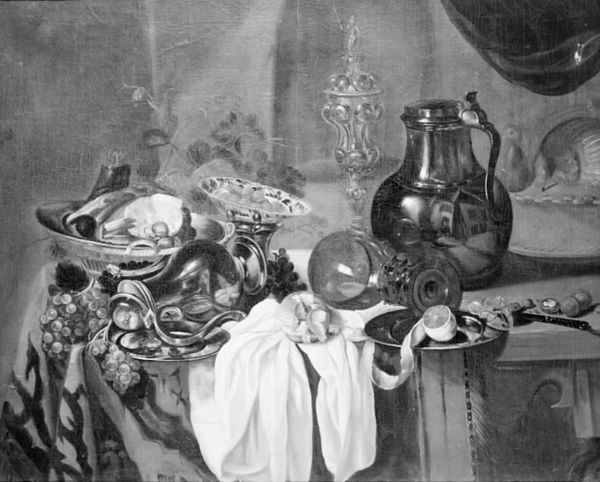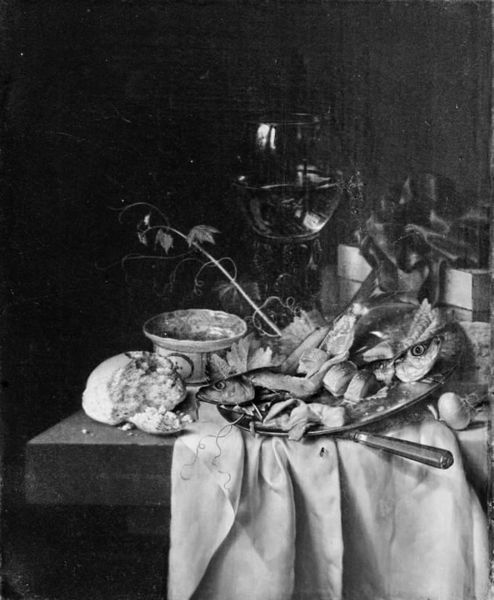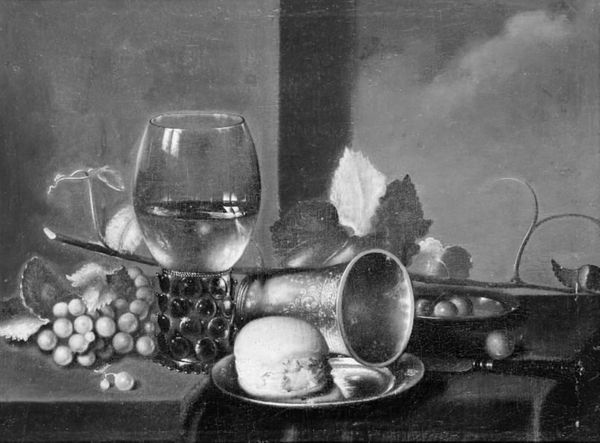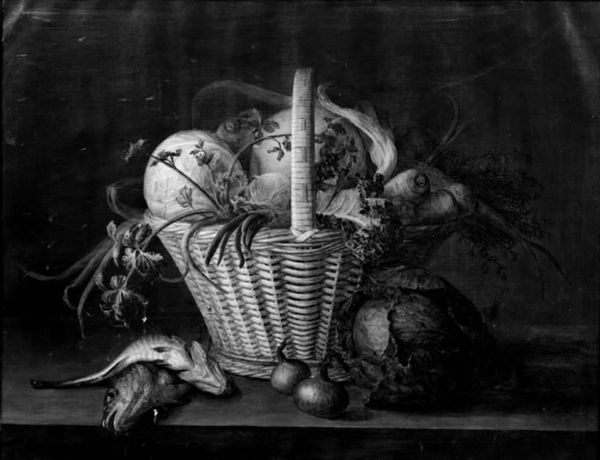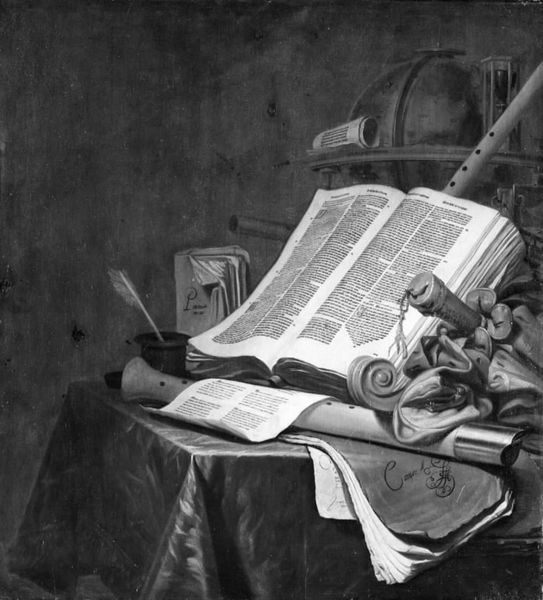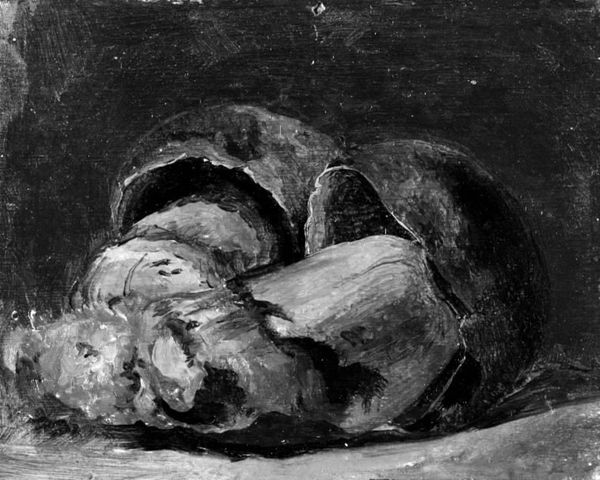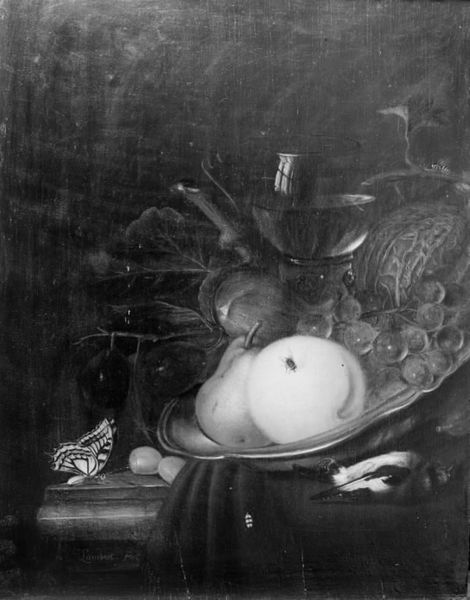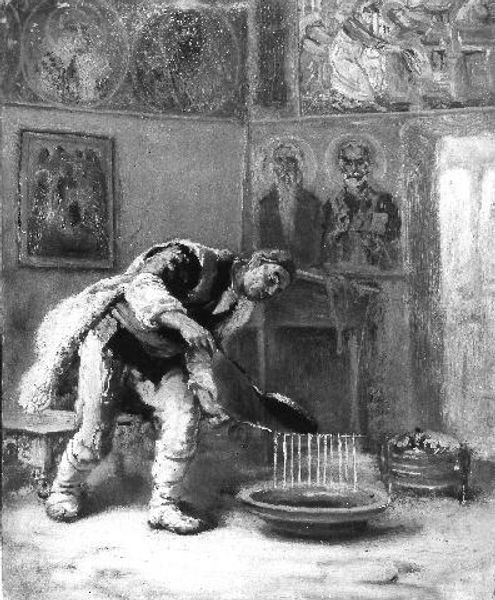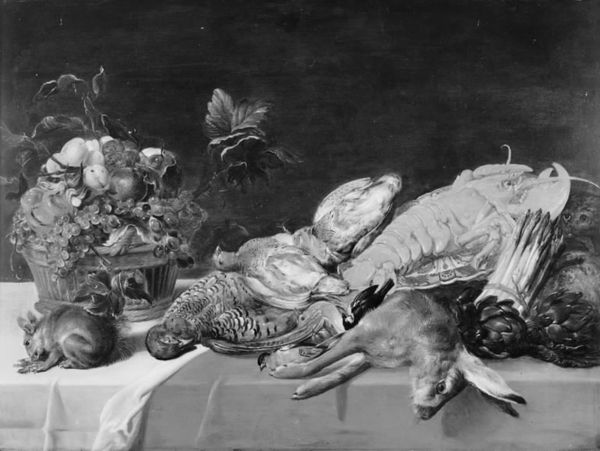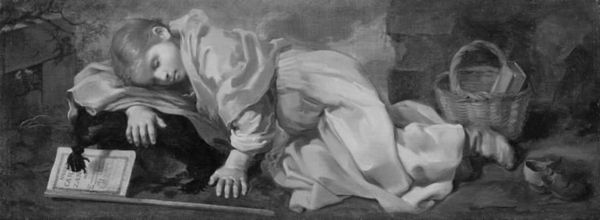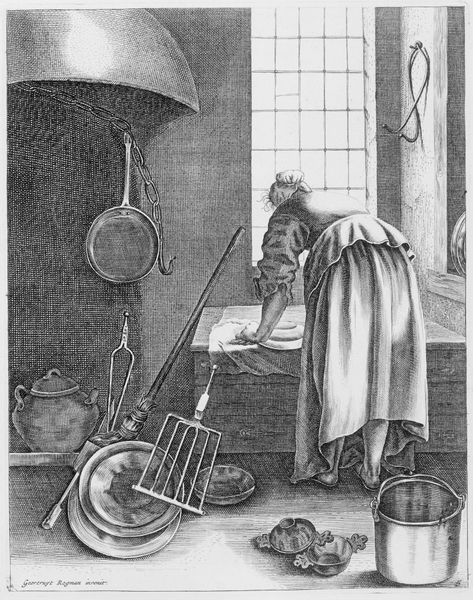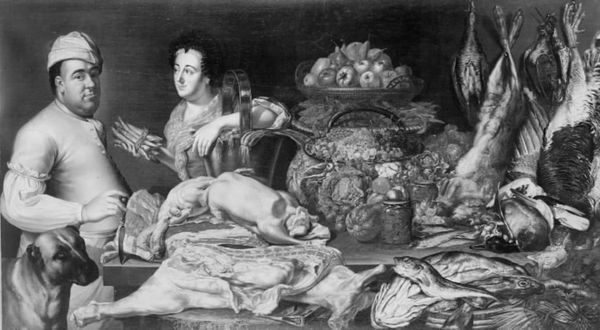
painting, oil-paint, canvas
#
narrative-art
#
baroque
#
dutch-golden-age
#
painting
#
oil-paint
#
canvas
#
black and white theme
#
vanitas
#
black and white
#
trompe-l'oeil
#
monochrome
Dimensions: 147 cm (height) x 107.5 cm (width) (Netto)
Editor: We're looking at "Still Life" by Jan Jansz. den Uyl II, painted sometime between 1653 and 1670. It’s an oil on canvas currently residing at the SMK in Copenhagen. The monochrome palette is striking and gives the scene a sense of starkness. What do you see in this piece? Curator: This monochrome "Still Life" speaks volumes. Den Uyl, working within the Dutch Golden Age, evokes the tradition of Vanitas paintings, where everyday objects subtly symbolize mortality and the fleeting nature of earthly pleasures. The arrangement isn’t accidental; can you sense any visual metaphors embedded within? Editor: Well, the lemon peel seems precariously balanced, maybe suggesting the temporary nature of things. And the tilted pewter dish feels like something is in disarray. Curator: Precisely! The precarious balance, the disordered objects… it's all about suggesting fragility. The monochrome adds another layer. What do you think this restricted palette emphasizes? Editor: Maybe that all material things end up the same— reduced, simplified, equal in their worthlessness. Curator: Interesting perspective! While earthly distinctions fade, the choice could also be linked to stylistic trends— capturing texture, reflective properties, shadow with simple tonality becomes central. Do you see this at play? Editor: Now that you mention it, I see it in the way light reflects off the pewter. And perhaps, like trompe l'oeil, this is meant to be deceptively like realism even while its subject is quite morose. Curator: Yes, exactly. Beyond a meditation on death, the paintings reflect a very particular visual vocabulary for their time. And they remind us how artists across time have reflected similar psychological conditions through varying images. Editor: This makes me appreciate the painting's emotional complexity beyond the surface. I am fascinated to learn of the imagery used here. Curator: Absolutely, and the way familiar symbols shift across cultures to continue conversations about our own lives and culture.
Comments
No comments
Be the first to comment and join the conversation on the ultimate creative platform.
